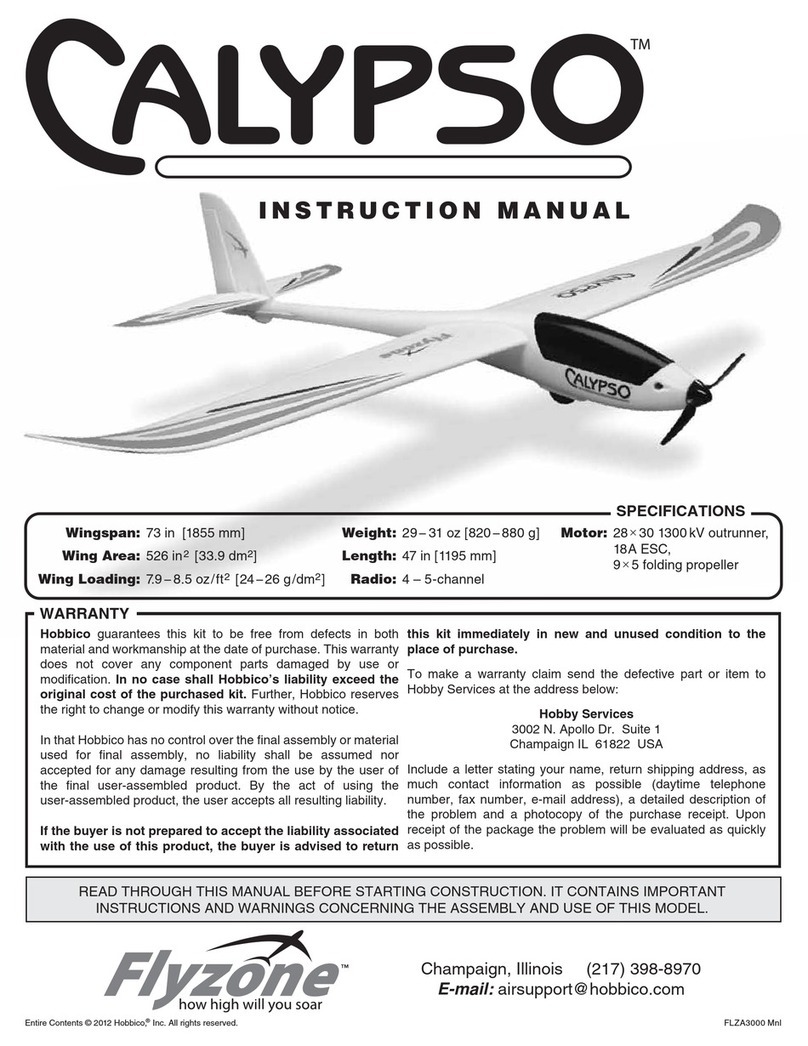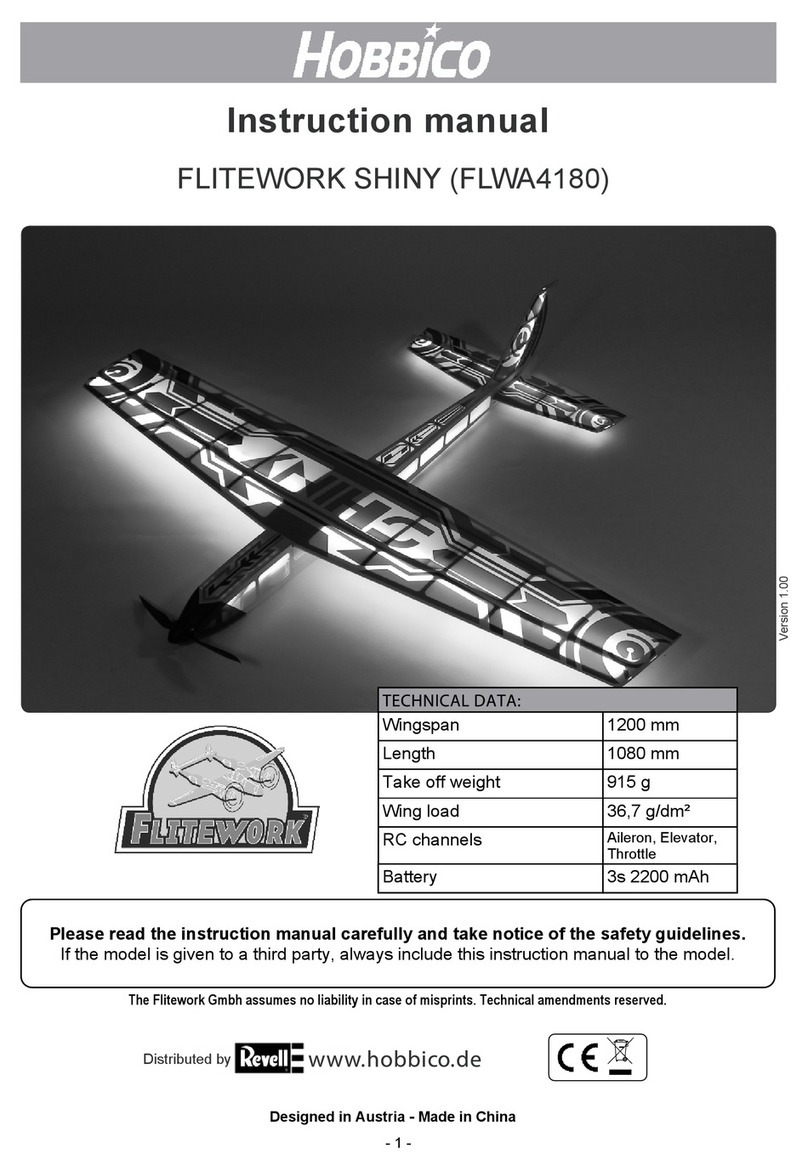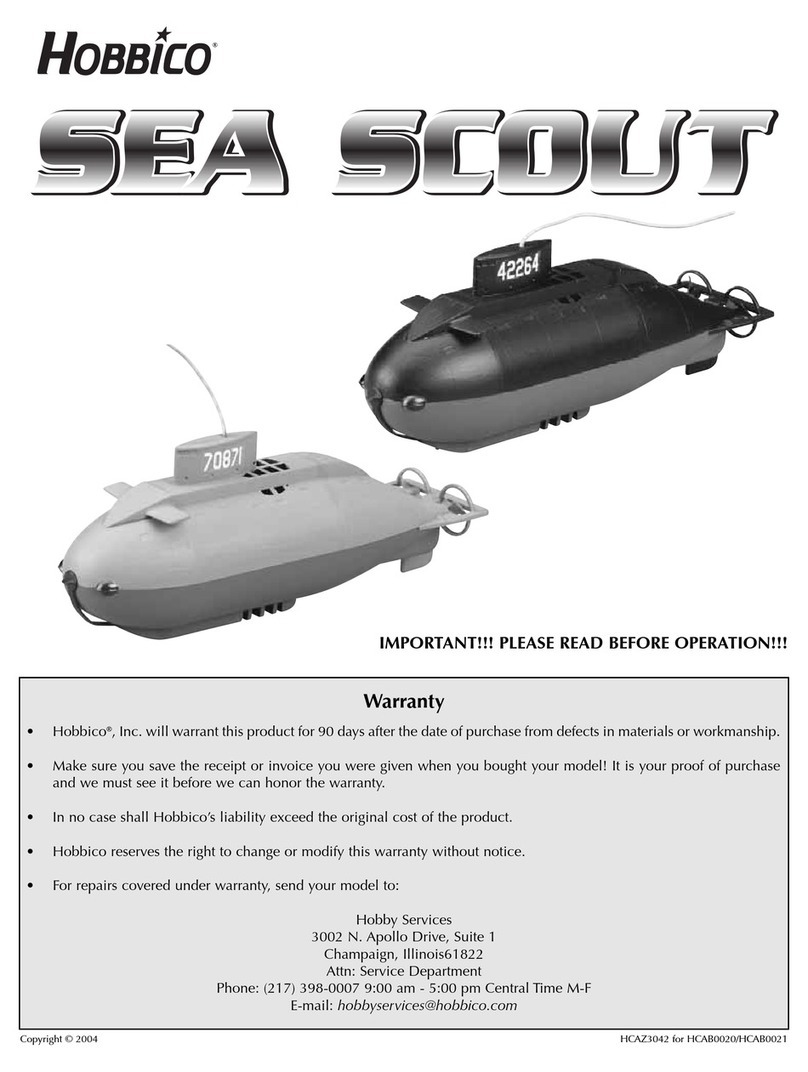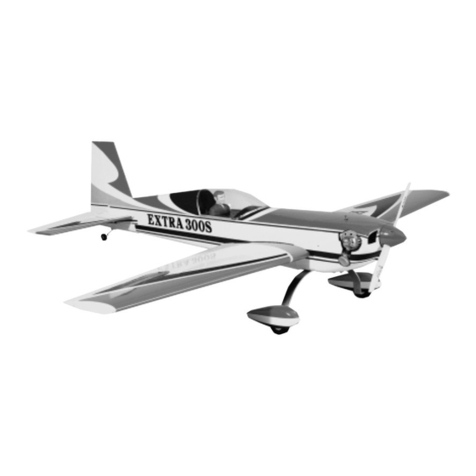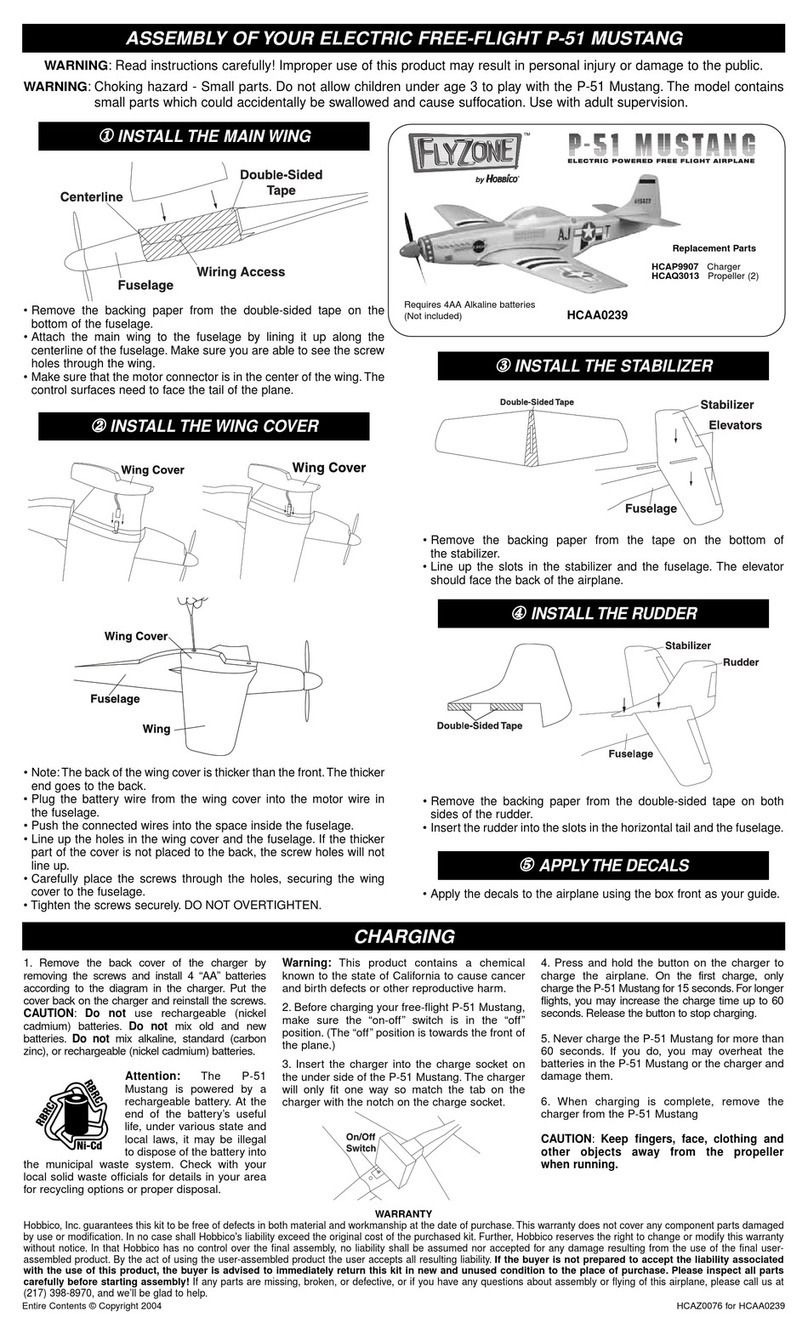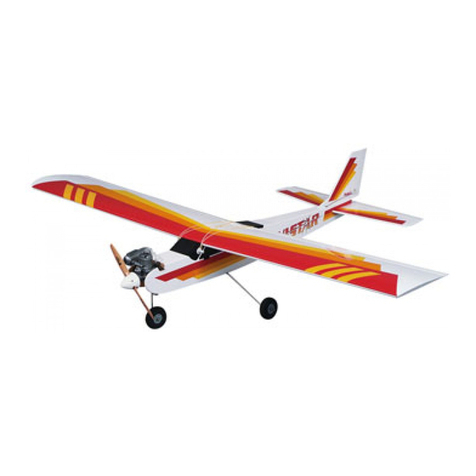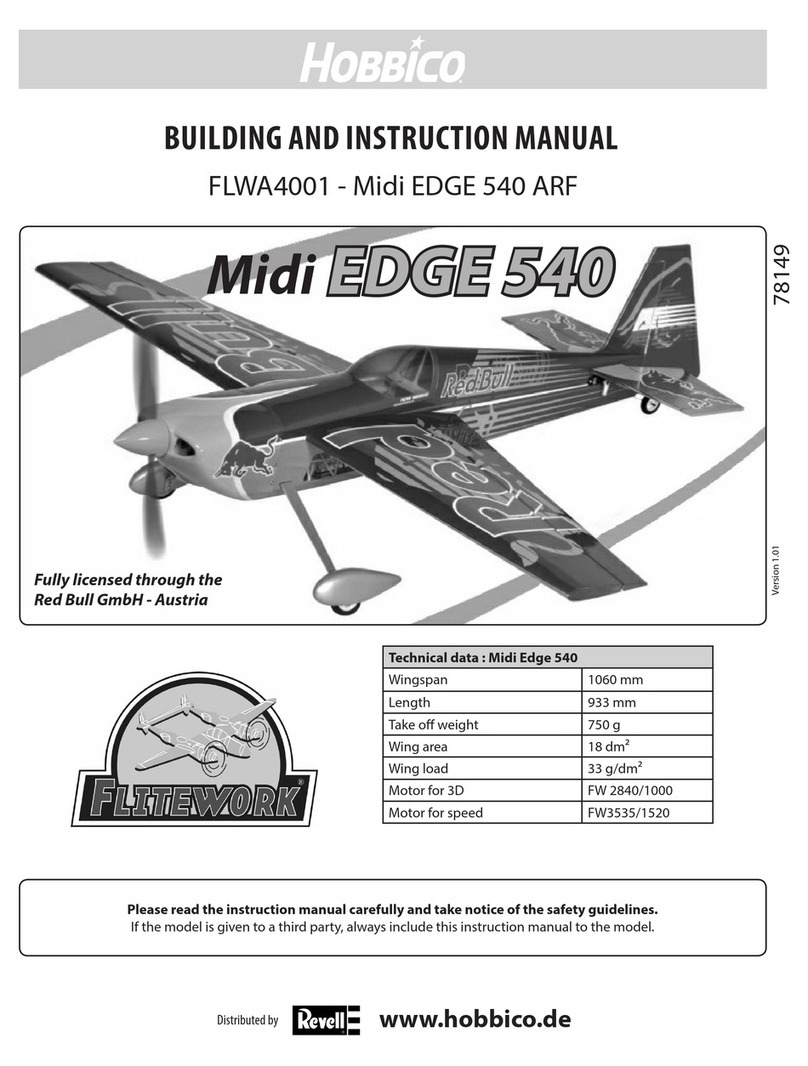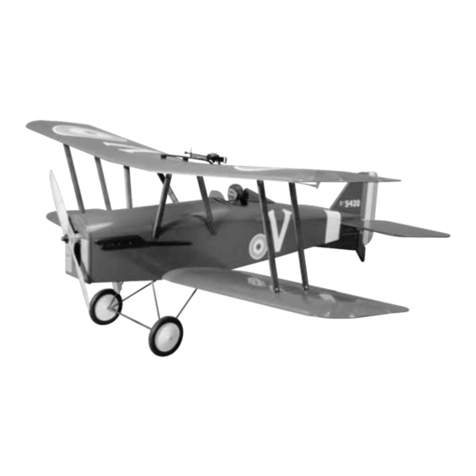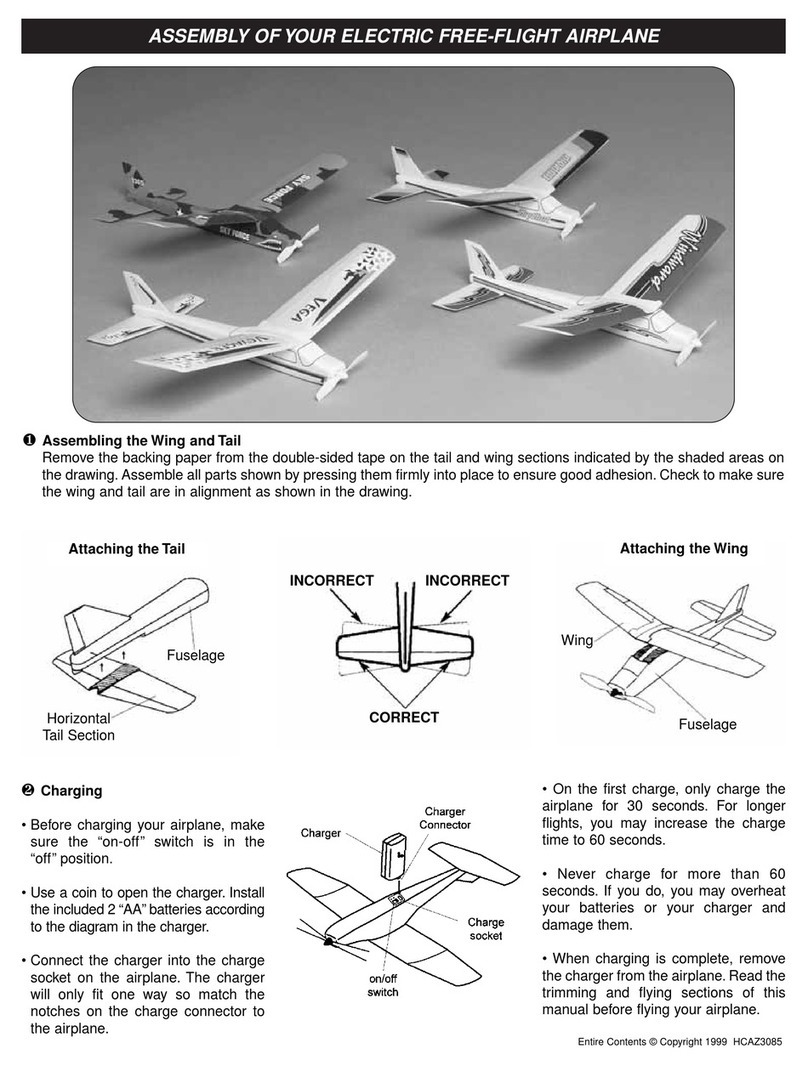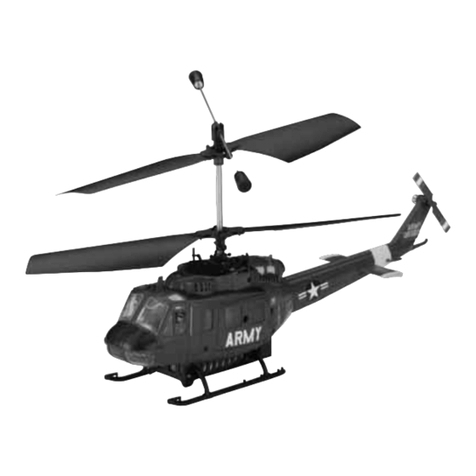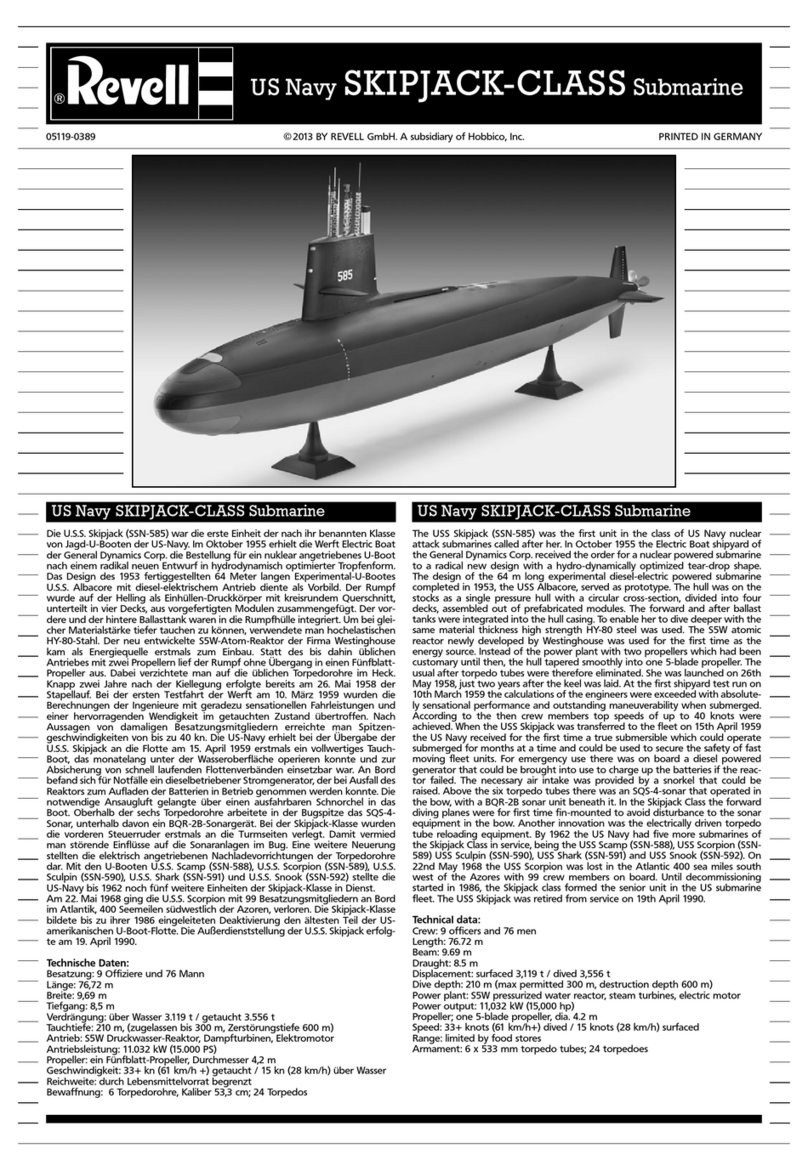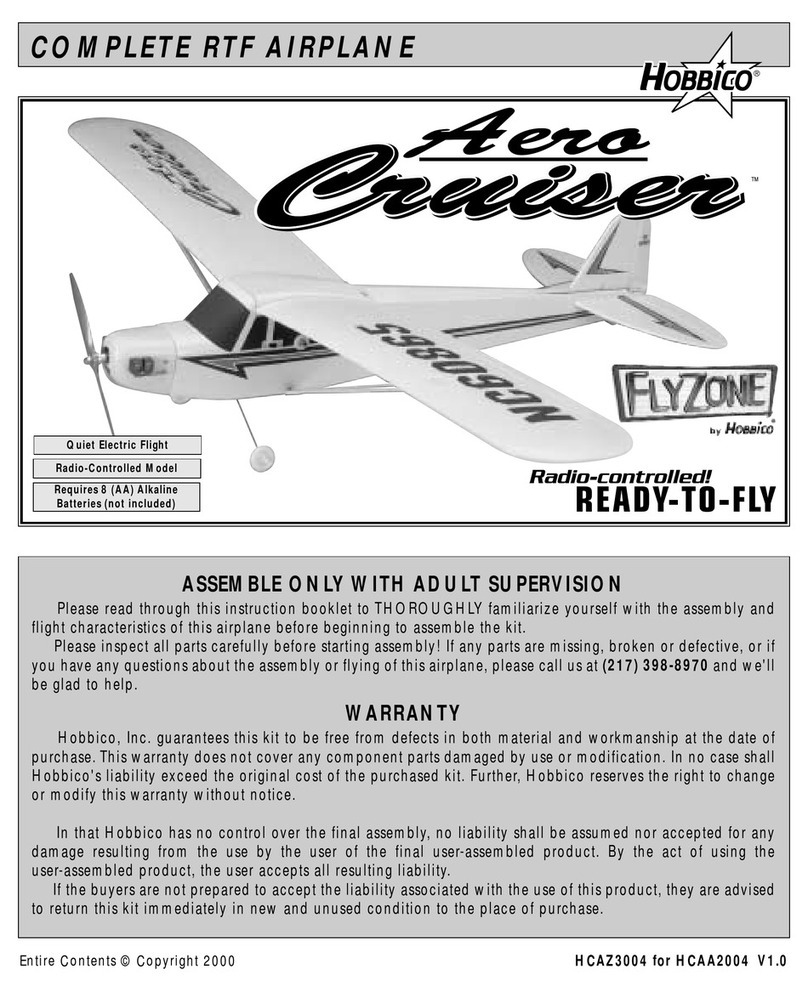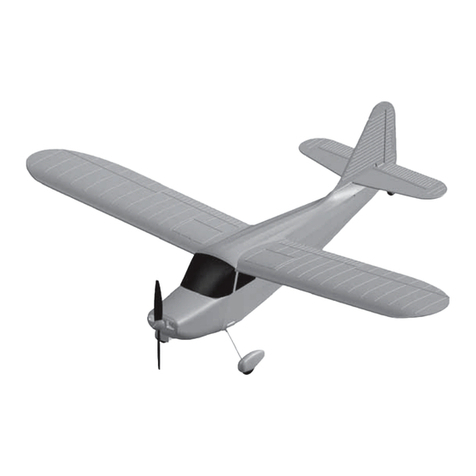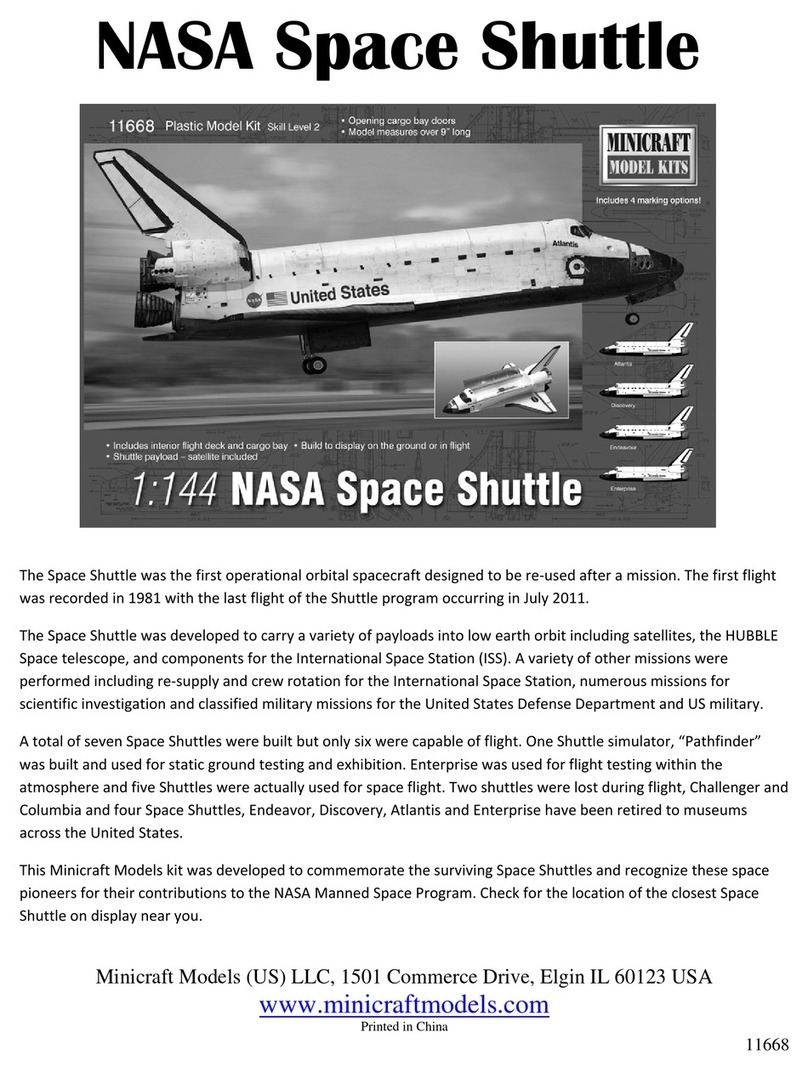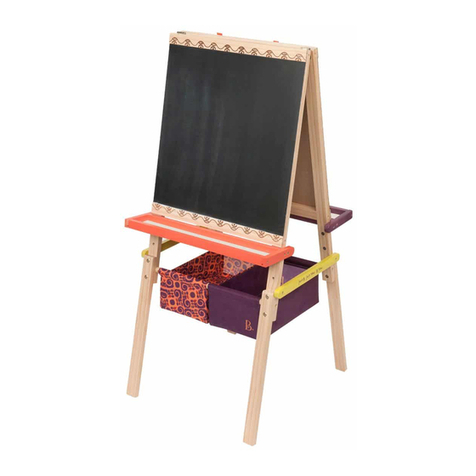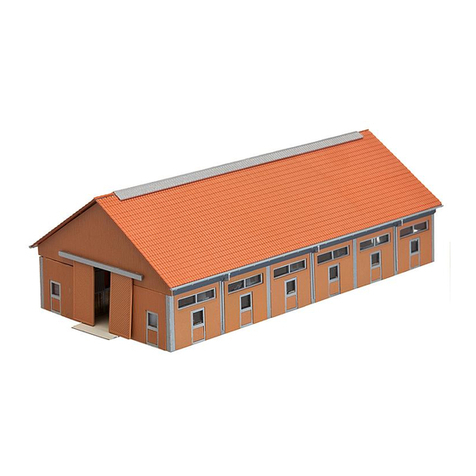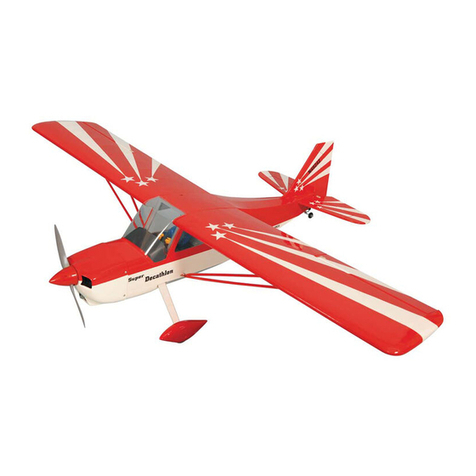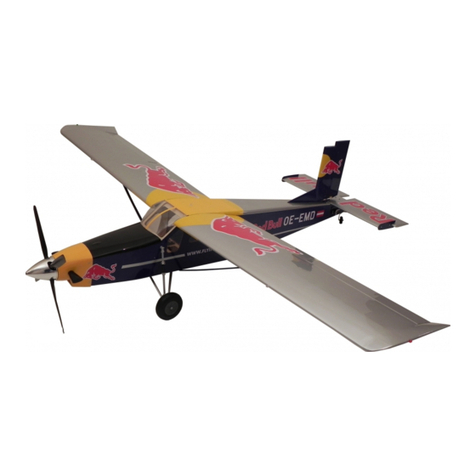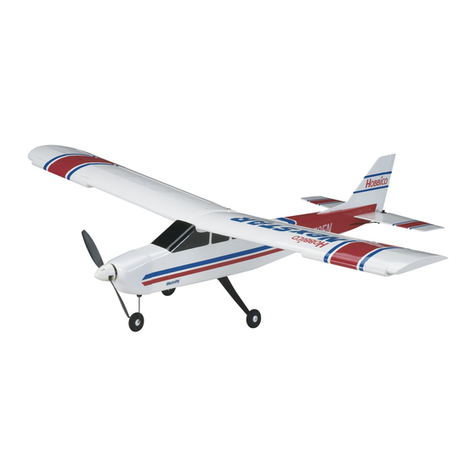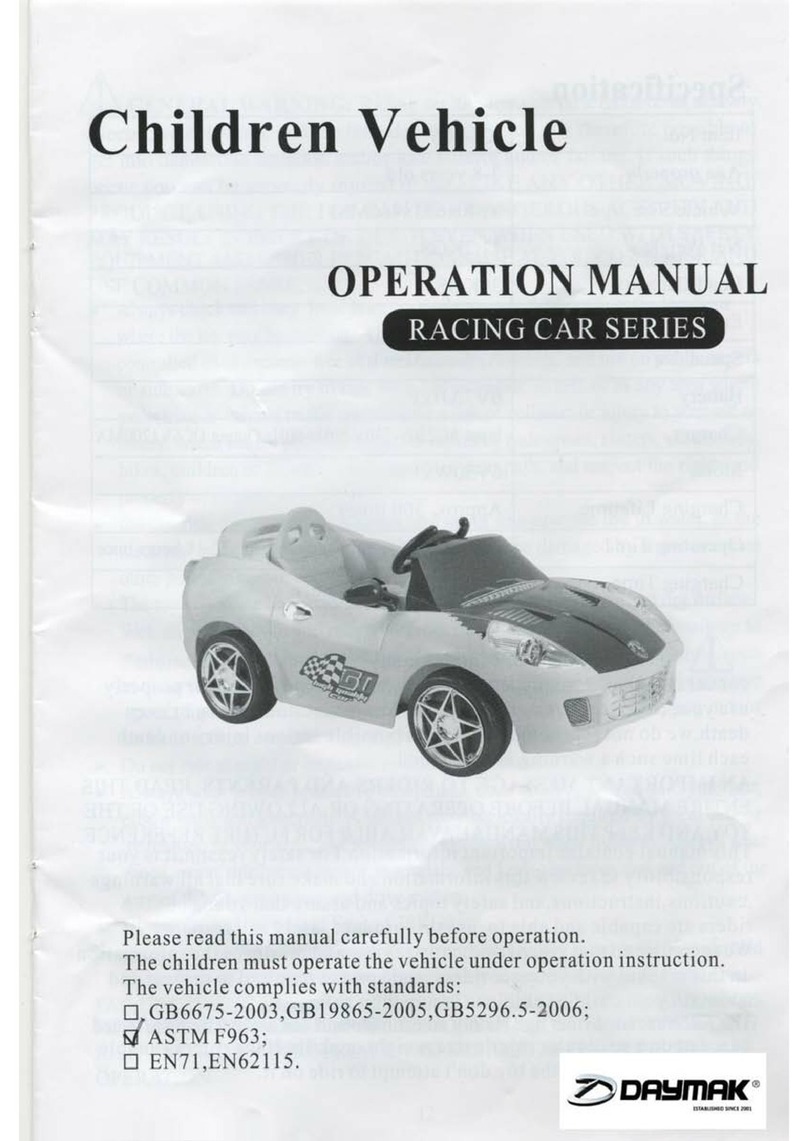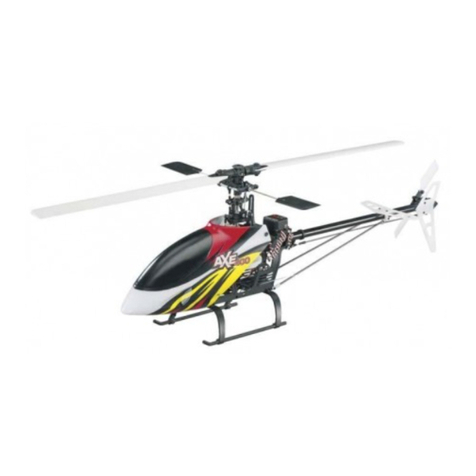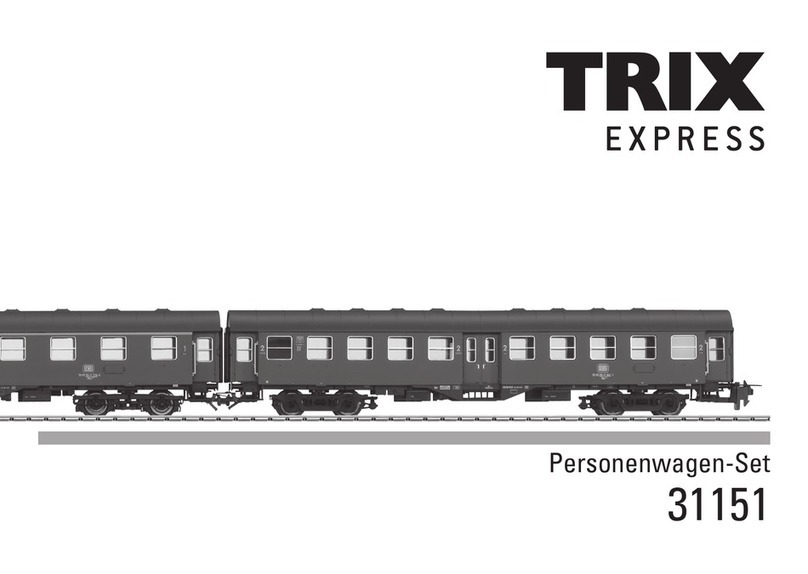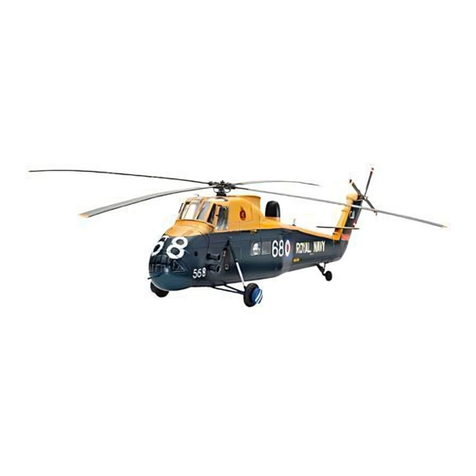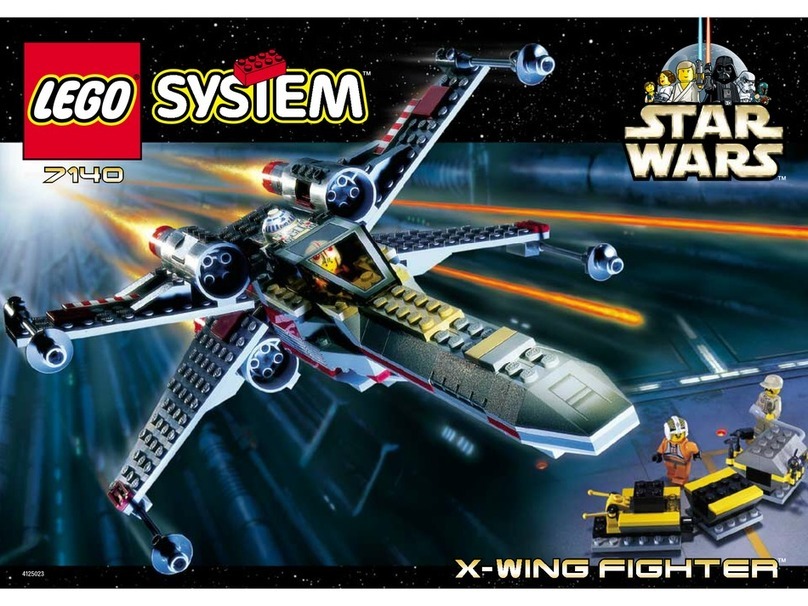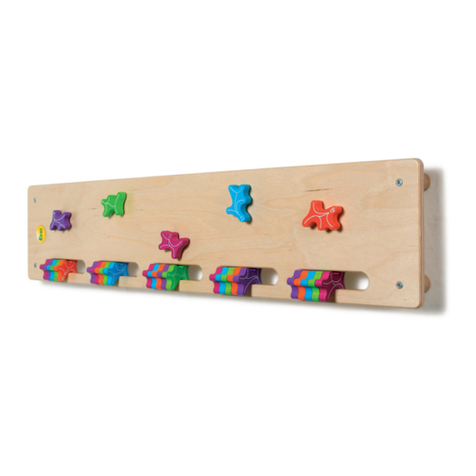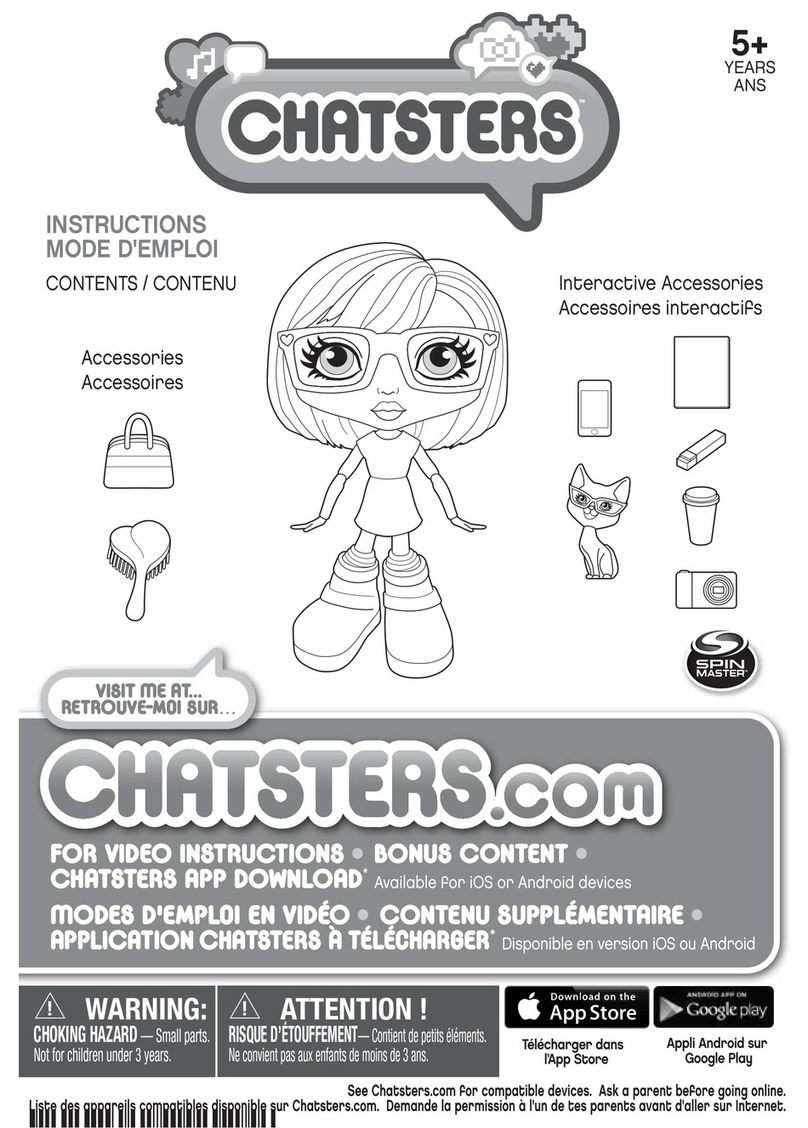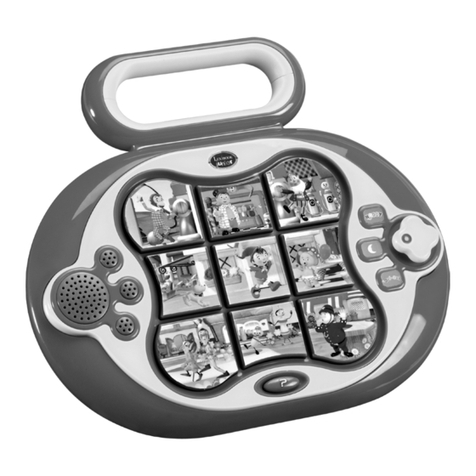Pre-FlightCheck
1.Cleanthedustdirt,andoiloff of thesurfaceof theairplane.
2.Checktomakesureallnuts,bolts,andscrewsaresecurely
fastened.
3.Checkallcontrolsurfacestoseeiftheyareproperlyattached.
4.Checktherangeof theradiosystem as themanufacturer
recommends.
5.
Check
thatallcontrolsmove
smoothlyand
inthe
proper
directions.
6.
Check
thelevelofchargein
the
transmitterandreceiverbatteries.
7.Checkthattheareabeingusedisfreeofobstaclesanddebris.
8.Checkthefrequenciescurrentlyinuseatthefieldandinyour
area.
9.Checkthelevel
of
thefueltank
to
besure
it
is
full.
10.Doublechecktheradiooperation.
FlightSafety
•Ifthisairplanehappenstobeyourfirstradiocontrolledairplane,we
stronglysuggestthatyouaskaskilledpilotorinstructortohelpyou
learnhowtofly. Youshouldalsosuggesttohimtotakethemaiden
flighttoseewhatproblems(ifany)thatneedtobeworkedout.There
willbeenoughtoworryaboutonyourfirstsoloflightwithouthaving
toworry aboutwhetherornotitisproperlysetup.
•Flyinanopenfieldwithoutanyobstructions.Forexample, trees,
powerlines,buildings,crowdsofpeople,etc.,areobstaclesthatthe
planemayhitandcausedamage.
•Ifyou areanovicepilot,localareaclubshavebeenformedandare
verywillingtohelpyouwithanyquestionsyou mayhave.Manyof
theclubsevenhaveclubtrainerairplanesthattheywillactuallyteach
you
to
fly
with.
Thishelpsprevent
disappointing
crasheson
yourfirst
flights.Addressesoflocalareaclubscanbelocatedfromyourlocal
areahobbyshopand/orbywritingto:Academyof ModelAviation,
1810SamuelMorseDrive,Reston,VA 22090.
•Flythemodelatreducedthrottleuntilyougetto knowtheflight
characteristics.
•Whenadjustingtheneedlevalvejustpriortoflight,holdtheplaneat
a45*noseupaltitude,fullopenthrottleandadjustthethrottlefortop
performanceasthemanufacturer'sinstructionssuggest.
Take-Off
Theairplanemaybetaxiedaroundon a smooth/opensectionof
pavementwithoutthewingaftertheenginehasbeenadjustedandthe
radiohasbeenproperlychecked.Becomefamiliarwithcontrollingthe
planeonthegroundwiththerudder,intheairyouwillfindthatmostofthe
timeyouwillbeusingacombinationofelevatorandaileronsto turn the
planebecausetheyaremoreeffective intheair.Ontheground,the
rudderismoreeffective. Atransitionwillneedtobemadeoncetheplane
leavestheground.Thattransition,from usingtherudderontheground
tousingtheaileronsonceitleavestheground,willtakea littlepractice.
Onegoodruleofthumbistoalwaystakeoffdirectlyintothewind(ifthere
isany).Thiswillpreventthewind
from
trying
to
blowthemodel
from
side-
to-sideandwillnottakeasmuchrunwayasifyouweretryingtotakeoff
downwind.
Onceyoufeelcomfortablewiththewayithandlesontheground,it
comes
time
for
you
to
concentrate
very
much
onthe
airplane's
movements.
As you arereadyfor take-off, simplypointthenoseintothewindand
slowlyadvancethethrottleuptofullthrottle.Atthispointtheplanewillbe
goingvery fast andwillbeverysensitiveto yourrudderinputs.Use
smoothinputs
to
correcttheplane
from
wandering
off
of
therunway.Once
theplaneisattake-offspeed,slowlypullbackontheelevatorstick.This
willcausetheplanetoleavetheground.Atthispoint,noticewhetherthe
planetendstoturn,climbordive,andmakethenecessaryopposite
controlinputstokeeptheplaneonagentleclimbinthedesireddirection.
Flight
Oncetheplanehasreacheda safe altitude,reducethethrottleto
abouthalfpower.Iftheairplaneisproperlysetup(i.e.correctC.G.,trims
all
centered,
engineproperlyset),theplaneshouldbe
very
stablewithout
anywanderingtendencies.Ittheplanedoestendtogomoreinone
directionthananother,use
your
trimleverson
your
transmitter
to
correct
this.Donotlookatthetransmitterwhileadjustingtrims. Thenwhilethe
planeisflyingstraight,adjusttheelevator trimto correct abnormal
climbingordiving.Ifthetrimswillnotovercome a turnora climbing
tendency,landthemodelimmediatelyandcheckfor impropersetup.
Landing
Thereisanoldsayingthatstates, "You donothavetotakeoff...
Butyoudohavetoland."Therefore,bereadytolandatalltimesduring
yourflight.Theenginemaynotstayrunningthroughacompletetankof
fuelforonereasonoranother.Itissuggestedtotimethe"runtime"ofa
completetankbeforeflight.Thatwayyouknowapproximatelywhatto
expectandwhenyouneedtolandbefore thefuelrunsout.
Setupyourlandingapproachdownwindat100-200feetupand500-
800feetawaydependingontheheight
of
theplaneandthestrength
of
the
wind.Approachintothewindandslowlyreducethethrottletotheclosed
position.Concentrateontheglidepathof theplane,takingnoticeof
whethertheplanewillreachthebeginningof therunway orifitwill
overshoottherunwaycompletely.Withsmooth,deliberateinputs,use
yourenginepowerandyourelevatortoadjusttheglidepathsotheplane
willtouchdownsmoothlyonthebeginningoftherunway atitsslowest
speed.Itwillstillseemveryfastandwillusethecompleterunwaytoslow
down.
After-FlightMaintenance
•Removeallexcessfuelfrom thefueltankasthisfuelcanbecome
jelly-likeandcausecloggingofthefuellinesaswellascloggingthe
engine'scarburetorvalves.
•Alwaysuseafter-runoilintheengineto preventcorrosion.
•Checkanddoublecheckthatthetransmitterandreceiverswitches
areswitchedtotheoff positions.
•
Wipe
off
the
excess
oilthatwillcollectonthe
wing
and
fuselage.
Use
alight-dutycleanserto helpcutthroughtheoil.
•Remove fresh fuel from the surface oftheplaneimmediatelyas
differentbrandscancausecloudingofthesurface.
•Replaceanybent,marred,ordingedpropsastheycanflyapartat
anytimewhentheengineisturning.
•Completelychecktheaiplanefordamagetothewings,landinggear,
coveringandrepairas neededbeforeyournextflight.
Repair
Ifdamageshouldoccur,wipethebrokenareacleanwithacleanragto
removealldebris.Useepoxygluetorepair.DonotuseCyanoacrylate
adhesivenearanyfoam partsasitwilldeterioratethefoam.
FullyAssembledHobbistar60
-18-




















